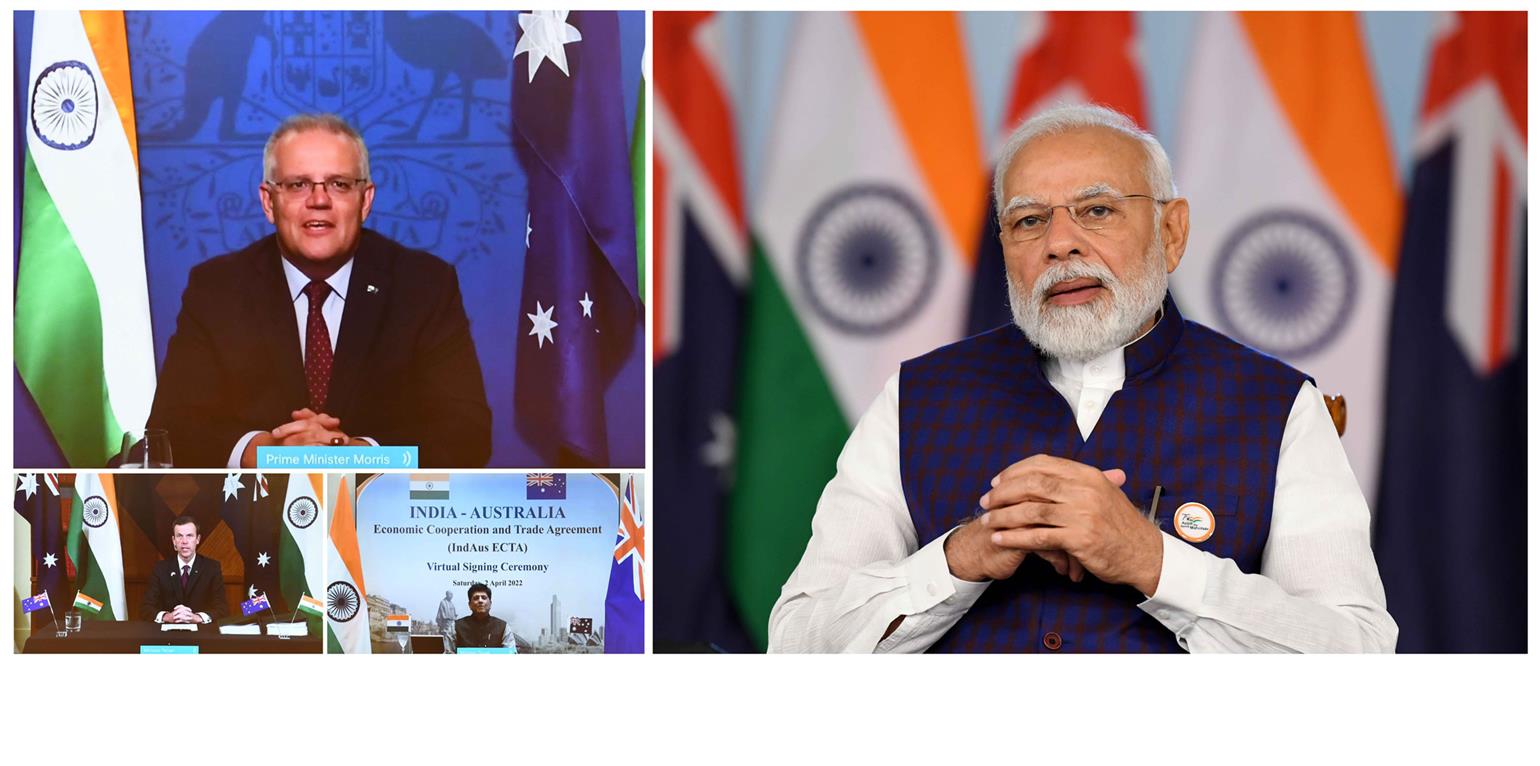On Saturday, 3rd April, 2022, India and Australia signed the ECTA – Economic Co-operation and Trade Agreement.
The agreement was signed in a virtual ceremony. The signatories were the Indian Commerce and Industry Minister, Mr. Piyush Goyal, and his Australian counterpart, Mr. Dan Tehan. The Prime Ministers of India and Australia – Shri Narendra Modi, and Mr. Scott Morrison, were also present on the occasion.
This is India’s second international trade agreement signed this year. In February, India also signed a trade agreement with the UAE.
How important is India – Australia trade?
Australia is the 17th largest trading partner of India and India is Australia’s 9th largest trading partner. India-Australia bilateral trade for both merchandise and services is valued at US$ 27.5 billion in 2021.
Of these, Indian exports to Australia are about 6.9 Billion USD, while Australian exports to India are about 15.1 billion USD.
*Read this feature to understand what foreign trade means
Largest trading partner is usually in terms of money value of the goods and services traded.
At about 2.66 Trillion dollars, India is the world’s 6th largest economy. Australia, at about 1.3 Trillion USD, is the world’s 13th largest economy.
During the last 25 years (from 1995-2021), exports from India to Australia and Australia to India have both grown at about 8.7% per year.
What do India and Australia export to each other?
India’s exports to Australia include manufactured goods like gems and jewellery, leather, textiles, refined petroleum, railway passenger cars, etc. It also includes primary produce like rice (Basmati and non-Basmati).
Australia exports services and items like gold, coal briquettes, aluminium oxide, etc.
What will this agreement do?
Australia has given India India preferential market access on 100% of its tariff lines.
India has given Australia preferential market access on 70% of its tariff lines, which will benefit 85% of Australian imports to India.
Tariff lines are items that are exported. Trade value is the monetary value of goods traded.
Australia has also given India some benefits in the export of services. For instance, there is a quota for chefs and yoga teachers from India. A post-study visa of 2-4 years will be given to Indian students on a reciprocal basis (a similar visa will be given to Australian students in India).
In short, both countries have reduced the tax on each other’s products, so that exporters can sell and benefit from the large markets in both countries.
The International Factors in this agreement
India and Australia both want to expand their export markets and supply chains. Every country is trying to increase its source of goods. If the supply is disrupted from one country, some other country should be able to supply those things quickly. You must have read about this many times in the newsletter as well as the website. Remember the cooking oils story and the import of palm oil?
On 21st May, 2022, Australia will hold its national elections. This agreement will help the Scott Morrison government to showcase the opening up of the large Indian market to Australian exporters.
For India, export growth is a key area. India’s forex reserves have been growing as a result of the export push of the government.

